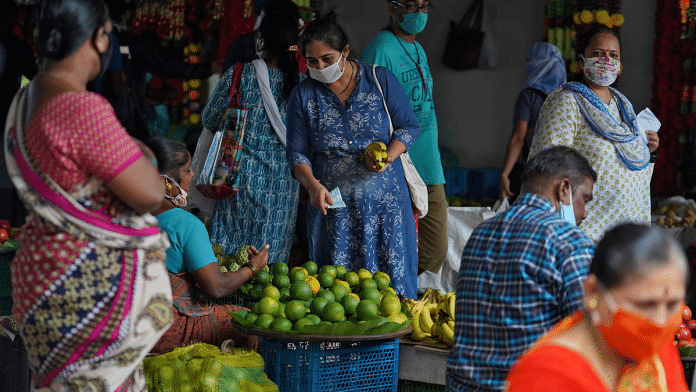Bengaluru: India posted an economic growth of 6.3% in its July-September quarter, far slower than the 13.5% growth reported in the previous three months as distortions caused by COVID-19 lockdowns faded in Asia’s third-largest economy.
Government capital spending increased more than 40% during the quarter as the federal government stepped up expenditure on infrastructure from roads to railways, according to official data on Wednesday.
The growth rate was above the 6.2% forecast by economists in a Reuters poll for the quarter, the second of India’s 2022/23 financial year.
Commentary
Madhavi Arora, Lead economist, Emkay Global Financial Services, Mumbai
“Second-quarter GVA (gross value added) growth expectedly slowed at 5.6%, led by growth in the services sector while manufacturing was a big drag.
“Going ahead, even as recovery in domestic economic activity is yet to become broad-based, protracted global drags, shrinking corporate profitability, demand-curbing monetary policies and diminishing global growth prospects weigh on output.
“This will put pressure on domestic growth, which still lacks the next lever of secular growth. We see downside risks increasing for our 7% growth forecast for FY23.”
Sujan Hajra, Chief Economist, Anand Rathi, Mumbai
“The deceleration of GDP growth was expected due to both asymmetric base effect and sharp slowdown of exports in the latest quarter. We expect the growth slowdown to continue for the remainder of the current financial year.
“Services in the supply side and investments in the demand side would continue to be the main drivers of growth, while industry and consumption plus net exports will be the main drags.
“Despite the deterioration, we expect India’s GDP growth to be close to 7% during the current and 6-6.5% in the next financial year. Tightening bias of monetary and fiscal consolidation would continue in India during the current year. Both policies are likely to turn neutral in the next year as the inflation and growth rate cools off.”
Suvodeep Rakshit, Senior Economist, Kotak Institutional Equities, Mumbai
“GDP growth at 6.3% in 2QFY23 was in line with our expectation of 6.2%. The internals indicate a substantially weak growth in the industrials sector, led by manufacturing while the services sector growth has been steady given the recovery in contact-based services.”
Aditi Nayar, Chief Economist, ICRA, Gurgaon
“The Q2 FY2023 GDP growth of 6.3% came in similar to our estimate of 6.5%, even as the GVA rise of 5.6% trailed our forecast (6.3%) by a wide margin, led by an unexpected contraction in manufacturing that seems to reflect the impact of high input prices on margins in certain sectors.
“We are retaining our estimate of the real GDP growth for FY2023 at 7.2%, although a deepening of the external slowdown poses a risk.”
Sakshi Gupta, Principal Economist, HDFC Bank, Gurugram
“As expected, service activity was the major driver of growth, while the manufacturing GDP contracted. On the demand side, private consumption share to GDP fell — a signal towards the fragility of the consumption recovery seen in Q1 as the pent-up demand effect faded and elevated inflation hurt consumer spending.
“Going forward, both export growth and consumption could present downside risks to the GDP outlook. We expect H2 FY23 growth to be between 4% and 4.5% and full-year growth at 6.8%. For FY24, growth is expected to moderate further to 6% as global headwinds rise.
“This GDP print does not change our view that the Reserve Bank of India (RBI) is likely to raise rates by 35bps, taking the policy rate to 6.25% at its December meeting.”
Garima Kapoor, Economist, Institutional Equities, Elara Capitals, Mumbai
“Even as domestic growth drivers on the services side continue to remain robust, weakening global demand amid tightening financial conditions remains the key risk for growth outlook for India in the near term. We see India’s FY23 GDP growth at 7.1% and FY24 GDP growth at 6%.”
Devendra Pant, Chief Economist, India Ratings, Mumbai
“GDP growth slowdown in 2QFY23 was on expected lines. Favourable base effect is slowly waning, higher inflation and weak demand – both internal and external – are having an impact in GDP growth.
“GDP growth in the second half is expected to slow down further. Unless inflation is under control and global demand recovers, it is difficult to sustain high growth momentum.”






